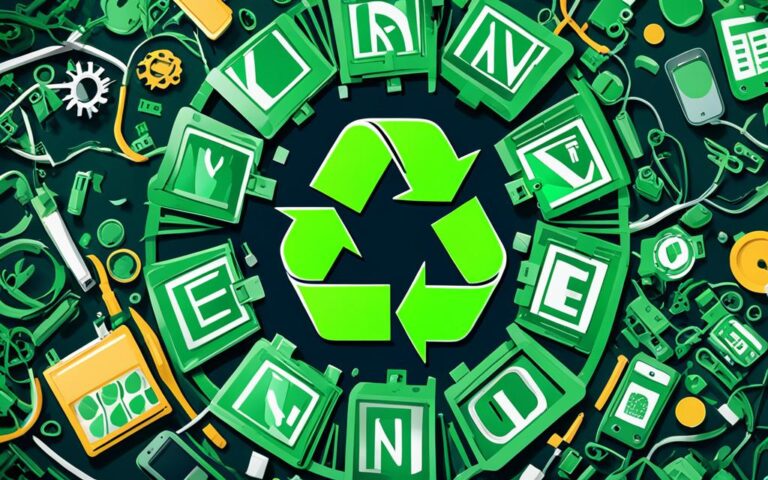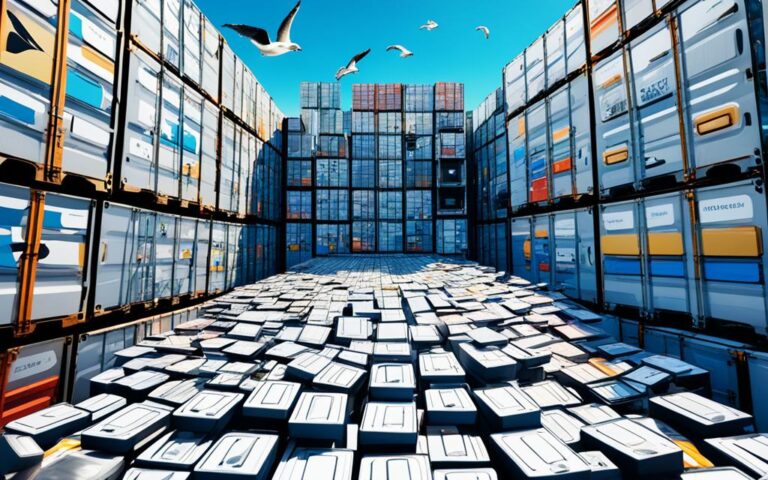The Environmental Impact of Discarded Servers: A Deep Dive
As our world becomes increasingly digital, we often overlook the environmental consequences that come with our technological advancements. One area of concern lies in the environmental impact of discarded servers – a topic that deserves a deep dive. When we think about servers, we often envision the complex systems that power the internet and store immense amounts of data. However, these powerful machines have a significant environmental footprint, encompassing energy consumption, carbon emissions, water usage, land and biodiversity impact, and electronic waste.
Data centers housing these servers contribute to 1% of the world’s energy demand, and the cooling systems in these facilities significantly increase energy consumption and water usage. We find ourselves at a critical juncture where technology is both indispensable and ecologically burdensome. It is essential to recognize the impact of discarded servers on our environment and take steps towards sustainable data management practices.
Types of Dedicated Servers
When it comes to dedicated servers, there are a variety of options available to cater to different needs and preferences. Understanding the different types of dedicated servers is essential for businesses and individuals looking to find the perfect fit for their hosting requirements.
Managed Servers
Managed servers offer a hassle-free hosting experience as they are handled by a hosting company. This type of dedicated server is ideal for businesses that prefer not to handle technical tasks themselves. With managed servers, the hosting company takes care of server maintenance, security updates, and monitoring, allowing businesses to focus on their core operations.
Unmanaged Servers
On the other hand, unmanaged servers require clients to have technical knowledge and manage the servers themselves. This type of dedicated server provides more control and customization options, making it suitable for individuals or businesses with specific requirements. With unmanaged servers, clients have the freedom to install custom software, configure settings, and optimize server performance according to their preferences.
Windows Servers
Windows servers run on the Windows operating system and are designed to host applications that require Windows compatibility. These servers provide a familiar environment for businesses using Windows-based software and applications. Windows servers offer seamless integration with Microsoft technologies and are known for their robust performance and user-friendly interface.
Linux Servers
Linux servers operate using the Linux operating system and are widely recognized for their stability and security. They are a popular choice for web hosting due to their reliable performance and cost-effectiveness. Linux servers provide a flexible and customizable environment, supporting a wide range of open-source software and applications.
Choosing the right type of dedicated server is crucial to ensure optimal performance, security, and compatibility with your hosting requirements. Whether you prefer managed or unmanaged servers, or have specific software requirements, there is a dedicated server type to suit your needs.
In summary, the types of dedicated servers include managed servers, unmanaged servers, Windows servers, and Linux servers. Each type offers unique benefits and features, allowing individuals and businesses to select the most suitable option based on their technical expertise, customization requirements, and compatibility needs.
Advantages and Disadvantages of Dedicated Hosted Servers
Dedicated hosted servers offer numerous advantages that make them a popular choice for businesses and individuals looking for high-performance and secure hosting solutions. However, it is important to consider the potential disadvantages as well. Let’s explore the advantages and disadvantages of dedicated servers in more detail.
Advantages of Dedicated Hosted Servers
- High Performance: Dedicated servers provide superior performance as the resources are not shared with other clients. This ensures smooth website operation even with high traffic volumes. With dedicated resources, your website can handle heavy workloads without compromising on speed and responsiveness.
- Enhanced Security: Dedicated hosted servers offer enhanced security as clients have full control over security measures. You can implement robust security protocols, install specialized firewalls, and customize security settings according to your specific needs. You have complete sovereignty over your server’s security, minimizing the risk of unauthorized access or data breaches.
- Flexibility: Dedicated servers offer unparalleled flexibility, allowing you to customize hardware specifications, software configurations, and operating systems according to your unique requirements. Whether you need specific processors, increased storage capacity, or a particular operating system, dedicated servers provide the flexibility to tailor your hosting environment to your precise needs.
- Reliability: With dedicated hosted servers, there is no risk of other clients’ activities affecting your website’s uptime or performance. You have exclusive control over server resources, ensuring consistent reliability and uninterrupted operation. This reliability is crucial for businesses that require constant access to their online services and cannot afford downtime or performance fluctuations.
Disadvantages of Dedicated Hosted Servers
- Cost: One of the main disadvantages of dedicated servers is their higher cost compared to shared hosting options. Dedicated servers involve dedicated resources and infrastructure, which come at a higher price point. While the investment is justified for businesses with specific requirements, it may not be the most cost-effective option for smaller websites or individuals with limited budgets.
- Technical Knowledge: Unmanaged dedicated servers require technical knowledge for smooth server operations and issue resolution. If you lack the necessary expertise, managing the server may become a daunting task. Managed servers, on the other hand, alleviate this concern by providing technical support, but often at an additional cost.
It’s essential to weigh these advantages and disadvantages based on your unique needs and resources. While dedicated hosted servers offer unmatched performance, security, flexibility, and reliability, they may not be suitable for every situation. Evaluate your hosting requirements, budgetary constraints, and technical capabilities before making a decision.
A Comparison of Dedicated Hosted Servers
| Advantages | Disadvantages |
|---|---|
| High performance with dedicated resources | Higher cost compared to shared hosting |
| Enhanced security with full control | Technical knowledge required for unmanaged servers |
| Flexibility to customize hardware, software, and OS | |
| Reliability without interference from other clients |
Advantages and Disadvantages of Data Centers
Data centers play a crucial role in housing servers and computing equipment, providing a range of benefits as well as presenting some drawbacks. Understanding these advantages and disadvantages is essential for businesses and individuals considering data center usage.
Advantages of Data Centers
Data centers offer several advantages, making them a preferred choice for organizations:
- High Reliability: Data centers are designed with backup systems and redundancies to ensure data accessibility. This ensures that businesses can continue their operations smoothly, even during unforeseen circumstances or technical failures.
- Advanced Security Measures: Data centers implement robust security protocols and measures to protect sensitive data from unauthorized access. These measures include physical security, encryption, firewalls, and intrusion detection systems.
- Scalability: Data centers provide scalability options, allowing businesses to easily accommodate increasing demands for data storage and processing. This scalability can be achieved without the need for significant investments in additional physical infrastructure.
- Professional Management: Data centers are managed by industry experts who ensure optimal data storage, backup, and security practices. This expertise enables businesses to focus on their core operations while relying on the data center’s knowledgeable team.
Disadvantages of Data Centers
Despite their advantages, data centers come with some disadvantages that should be considered:
- Expense for Small Businesses: Data centers can be expensive, especially for small businesses with limited budgets. The cost of renting server space, maintaining equipment, and accessing professional management services may pose financial challenges for smaller organizations.
- Complexity to Navigate: Data centers have sophisticated systems and require technical expertise to navigate and manage effectively. Without appropriate knowledge and experience, businesses may face difficulties in configuring and troubleshooting their server infrastructure.
- Dependence on External Facilities: When relying on data centers, businesses become dependent on external service providers. This reliance introduces an element of risk, as any disruptions in data center operations can have a significant impact on business continuity.
- Environmental Impact: Data centers consume substantial amounts of energy, contributing to their environmental footprint. The energy consumption and carbon footprint of data centers raise concerns about sustainability and ecological consequences.
Despite the disadvantages, data centers remain a viable and necessary solution for many businesses, offering reliable data management, security, and scalability. However, organizations must weigh these pros and cons carefully to make informed decisions regarding their data management strategies.
| Advantages of Data Centers | Disadvantages of Data Centers |
|---|---|
| High Reliability | Expense for Small Businesses |
| Advanced Security Measures | Complexity to Navigate |
| Scalability | Dependence on External Facilities |
| Professional Management | Environmental Impact |
How Do Data Centers Impact the Environment?
Data centers have a significant impact on the environment, primarily through their energy consumption and heat production. These facilities require a substantial amount of electricity to power various components such as servers, storage systems, networking equipment, and cooling systems. The energy consumption of data centers contributes to carbon emissions, contributing to climate change and environmental degradation.
Cooling systems in data centers play a vital role in maintaining the optimal temperature for equipment. However, these systems consume a significant amount of water, which can put pressure on local water resources and ecosystems. Balancing the need for efficient cooling with sustainable water management is crucial in reducing the environmental impact of data centers.
Another environmental concern associated with data centers is electronic waste generation. As equipment becomes obsolete or breaks down, it is often discarded, leading to the accumulation of electronic waste. Proper disposal and recycling practices are essential to minimize the negative impact on the environment and human health.
Furthermore, data centers require large plots of land to accommodate their infrastructure. This requirement can result in deforestation or habitat displacement, disrupting natural ecosystems and biodiversity. Protecting and preserving natural habitats is crucial for maintaining a sustainable balance between technological advancements and environmental conservation.
It is essential for data centers to adopt sustainable practices and technologies to minimize their impact on the environment. These practices may include using renewable energy sources, implementing energy-efficient hardware and cooling systems, and promoting responsible e-waste management. By prioritizing environmentally-friendly approaches, data centers can contribute to the global effort in achieving a greener and more sustainable future.
| Environmental Impact | Description |
|---|---|
| Energy consumption | Significant electricity usage for server operation |
| Carbon emissions | Contributes to greenhouse gas emissions |
| Water consumption | High water usage for cooling systems |
| Electronic waste | Generation of obsolete or broken equipment |
| Land use | Requires large plots of land for infrastructure |
Innovations and Strategies to Mitigate Environmental Impacts
In today’s digital landscape, finding innovative solutions to reduce environmental impact and adopting sustainable data management strategies has become a necessity. The continuous growth of servers and data centers has raised concerns about their energy consumption, carbon footprint, and contribution to electronic waste. However, the industry is actively working towards mitigating these challenges through various initiatives.
Evolving Energy Efficiency
One of the key innovations to reduce environmental impact is the development of energy-efficient technologies. More efficient cooling methods and energy-saving hardware are being introduced to decrease energy consumption in data centers. These advancements not only minimize the carbon emissions associated with server operations but also contribute to significant cost savings for businesses.
Renewable Energy Integration
To tackle the carbon footprint of data centers, renewable energy initiatives are being implemented. Many data centers are now leveraging solar, wind, and hydroelectric power sources to offset their energy consumption. This transition to clean, renewable energy helps reduce reliance on fossil fuel-based electricity and contributes to a more sustainable data management ecosystem.
Waste Reduction and Recycling
Efforts are being made to implement waste reduction strategies and promote proper e-waste recycling practices within the industry. Data centers are exploring ways to minimize electronic waste by extending the lifespan of equipment through refurbishment and responsible disposal. Partnering with certified e-waste recycling companies ensures that valuable resources are recovered and harmful materials are treated appropriately.
Optimizing Server Use with Virtualization and Cloud Computing
Virtualization and cloud computing are revolutionizing the way servers are utilized, leading to reduced physical infrastructure needs and environmental impact. These technologies allow for the consolidation of multiple virtual servers onto a single physical server, maximizing resource utilization and minimizing energy consumption. Cloud computing further optimizes server use by enabling resource scalability and reducing the overall carbon footprint of businesses.
Enforcement of Sustainable Practices through Legislation
Government policies and industry standards play a crucial role in promoting and enforcing sustainable data management practices. By implementing regulations that prioritize energy efficiency, renewable energy adoption, and responsible e-waste management, governments can incentivize businesses to take proactive measures towards reducing their environmental impact. Industry organizations also contribute by establishing sustainability frameworks and certifications that encourage businesses to strive for eco-friendly data management practices.
| Innovation/Strategy | Benefits |
|---|---|
| Energy-efficient technologies | – Decreased energy consumption – Lower carbon emissions – Cost savings for businesses |
| Renewable energy integration | – Reduced carbon footprint – Transition to clean energy – Decreased reliance on fossil fuels |
| Waste reduction and recycling | – Minimized electronic waste – Resource recovery – Responsible disposal practices |
| Virtualization and cloud computing | – Optimized server utilization – Reduced physical infrastructure needs – Scalability and flexibility – Lower carbon footprint |
| Government policies and industry standards | – Enforced sustainable practices – Incentivized eco-friendly data management – Enhanced environmental responsibility |
Conclusion
The environmental impact of discarded servers and data centers is a pressing issue in our digital age. The high energy consumption, carbon emissions, water usage, land and biodiversity impact, and electronic waste associated with these technologies pose significant challenges to our planet. However, the industry recognizes the urgency and is actively working towards mitigating these impacts.
Through technological innovations, such as more efficient cooling methods and energy-saving hardware, the industry aims to reduce energy consumption and carbon footprint. Renewable energy initiatives and carbon offsetting programs are being implemented to power data centers sustainably. Waste reduction strategies and e-waste recycling practices aim to minimize electronic waste from these facilities.
Moreover, virtualization and cloud computing are optimizing server utilization, reducing the need for physical infrastructure and minimizing the environmental impact. Government policies and industry standards on environmental responsibility are instrumental in driving sustainable data management practices and fostering collaboration between stakeholders.
We, as individuals, can also contribute to a greener digital future. By supporting companies committed to renewable energy, opting for eco-friendly web hosting solutions, advocating for e-waste recycling, and reducing our digital footprint, we can make a positive difference. Together, we can create a more eco-friendly data management landscape that protects our planet for future generations.
FAQ
What is the environmental impact of discarded servers?
Discarded servers have a significant environmental impact due to their high energy consumption, carbon emissions, water usage, land and biodiversity impact, and electronic waste.
What are the types of dedicated servers?
There are several types of dedicated servers, including managed servers, unmanaged servers, Windows servers, and Linux servers.
What are the advantages and disadvantages of dedicated hosted servers?
Dedicated hosted servers offer advantages such as high performance, enhanced security, flexibility, and reliability. However, they can be more expensive and require technical knowledge for unmanaged servers.
What are the advantages and disadvantages of data centers?
Data centers offer advantages such as high reliability, advanced security measures, scalability, and professional management. However, they can be expensive for small businesses, complex to navigate, and have a significant environmental impact.
How do data centers impact the environment?
Data centers impact the environment through their energy consumption, heat production, water usage, carbon emissions, and generation of electronic waste.
What innovations and strategies are being implemented to mitigate environmental impacts?
Innovations and strategies being implemented include more efficient cooling methods, energy-saving hardware, renewable energy initiatives, carbon offsetting, waste reduction strategies, e-waste recycling practices, virtualization, and cloud computing.













